This is a preprint.
Visualizing chaperone-mediated multistep assembly of the human 20S proteasome
- PMID: 38328185
- PMCID: PMC10849659
- DOI: 10.1101/2024.01.27.577538
Visualizing chaperone-mediated multistep assembly of the human 20S proteasome
Update in
-
Visualizing chaperone-mediated multistep assembly of the human 20S proteasome.Nat Struct Mol Biol. 2024 Aug;31(8):1176-1188. doi: 10.1038/s41594-024-01268-9. Epub 2024 Apr 10. Nat Struct Mol Biol. 2024. PMID: 38600324 Free PMC article.
Abstract
Dedicated assembly factors orchestrate stepwise production of many molecular machines, including the 28-subunit proteasome core particle (CP) that mediates protein degradation. Here, we report cryo-EM reconstructions of seven recombinant human subcomplexes that visualize all five chaperones and the three active site propeptides across a wide swath of the assembly pathway. Comparison of these chaperone-bound intermediates and a matching mature CP reveals molecular mechanisms determining the order of successive subunit additions, and how proteasome subcomplexes and assembly factors structurally adapt upon progressive subunit incorporation to stabilize intermediates, facilitate the formation of subsequent intermediates, and ultimately rearrange to coordinate proteolytic activation with gated access to active sites. The structural findings reported here explain many previous biochemical and genetic observations. This work establishes a methodologic approach for structural analysis of multiprotein complex assembly intermediates, illuminates specific functions of assembly factors, and reveals conceptual principles underlying human proteasome biogenesis.
Keywords: 20S proteasome; PAC1; PAC2; PAC3; PAC4; POMP; chaperone; core particle; molecular machine; multiprotin complex; propeptide; protease; proteasome.
Conflict of interest statement
Competing Interest Statement J.W.H. is a founder and consultant for Caraway Therapeutics. B.A.S. is on the scientific advisory boards of Biotheryx and Proxygen. All other authors have no competing interests to declare.
Figures
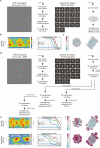

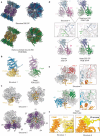
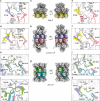

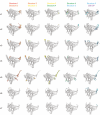

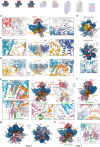
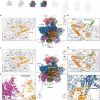

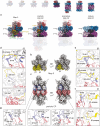

References
Publication types
Grants and funding
LinkOut - more resources
Full Text Sources
Miscellaneous
